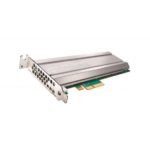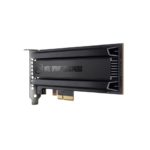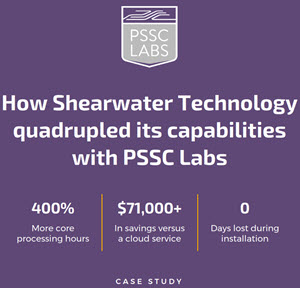Our main topic today is Intel, with the bulk of the discussion surrounding the return of Pat Gelsinger as Intel’s new CEO. Pat was a 30-year veteran of Intel before he left to pursue other, well, pursuits – most notably as CEO of VMware. While at Intel, Pat spearheaded the development of the 486 architecture […]
Intel Optane Persistent Memory Tops IO500 List
Intel announced today that its Optane persistent memory (PMem), in combination with Intel’s open-source distributed asynchronous object storage (DAOS) solution, has taken the no. 1 position on the Virtual Institute for I/O IO500 list for file system performance. Intel said DAOS, with 30 servers of Intel Optane PMem, came in ahead of systems on the […]
Radio Free HPC: The Persistence of Memory
In this episode, we drill down on what Intel is doing with their cool Optane memory tech, shooting for speeds that remind you of memory, sizes that look like storage, and costs that make it look like a deal, with real byte-addressable persistent memory right inside the server – or block-addressable, if you want. This is a space that was bound to get filled and we’ve been watching the industry’s progress.
Video: Introduction to Intel Optane Data Center Persistent Memory
In this video from the 2019 Stanford HPC Conference, Usha Upadhyayula & Tom Krueger from Intel present: Introduction to Intel Optane Data Center Persistent Memory. For decades, developers had to balance data in memory for performance with data in storage for persistence. The emergence of data-intensive applications in various market segments is stretching the existing […]
University of Pisa Extends Server Memory with Intel Optane and Dell EMC
In this video from the Dell HPC Community meeting, Maurizio Davini and Antonio Cisternino from the University of Pisa describe the work they are doing to extend server memory with Intel Optane technology. “Intel Optane technology provides an unparalleled combination of high throughput, low latency, high quality of service, and high endurance. This technology is a unique combination of 3D XPoint memory media, Intel Memory and Storage Controllers, Intel Interconnect IP and Intel software.”
Micron and Intel to continue joint development of 3D NAND Memory through 2019
Today Micron and Intel announced an update to their successful NAND memory joint development partnership that has helped the companies develop and deliver industry-leading NAND technologies to market. “The companies have agreed to complete development of their third-generation of 3D NAND technology, which will be delivered toward the end of this year and extending into early 2019. Beyond that technology node, both companies will develop 3D NAND independently in order to better optimize the technology and products for their individual business needs.”
Intel Rolls Out First Optane SSD with 3D XPoint Technology
“Delivering an industry-leading combination of low latency, ultra endurance, high QoS, and high throughput, the Intel Optane SSD DC P4800X Series is the most responsive data center SSD. Built with the revolutionary new 3D XPoint memory media, the SSD DC P4800X is the first product to combine the attributes of memory and storage. This innovative solution is optimized to break through storage bottlenecks by providing a new data tier.”
Podcast: Micron’s Steve Pawlowski on the Latest Memory Trends for HPC
In this podcast from ISC 2016 in Frankfurt, Steve Pawlowski from Micron discusses the latest memory technology trends for high performance computing. “When you look at a technology like 3D XPoint and some of the new materials the industry is looking at, those latencies are becoming more DRAM-like, which makes them a more attractive option to look at. Is there a way we can actually inject persistent memory that’s fairly high-performance so we don’t take a performance hit but we can certainly increase the capacity on a cost-per-bit basis versus what we have today?”
Video: First Look at Intel Optane Non-volatile Memory
“At IDF, Intel introduced Intel Optane technology, which is based on the revolutionary 3D XPoint non-volatile memory media and combined with the company’s advanced system memory controller, interface hardware and software IP, to unleash vast performance potential in a range of forthcoming products. Intel Optane technology will first come to market in a new line of high-endurance, high-performance Intel SSDs beginning in 2016. The new class of memory technology will also power a new line of Intel DIMMs designed for Intel’s next-generation data center platforms.”











